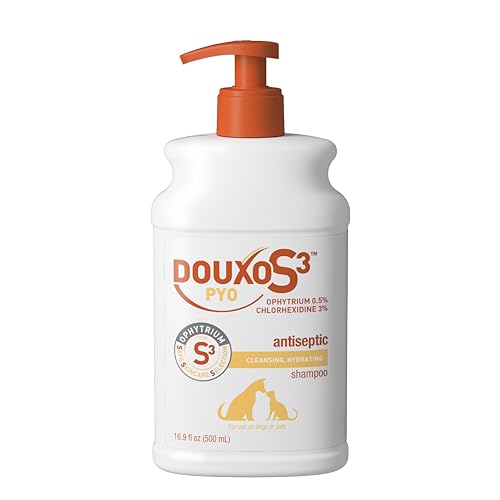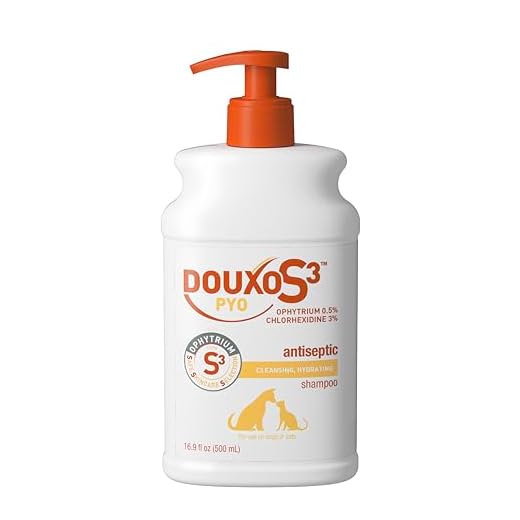It’s essential to keep an eye on our surroundings and hygiene. Mold spores and other similar organisms thrive in damp, warm areas, which makes places like abandoned buildings or public parks risk zones. Always avoid contact with unknown animals, as they might carry these harmful agents.
Regular grooming is a must! Frequent brushing not only keeps our coats shiny but also helps in spotting any unusual changes in the skin or fur. If you notice any bald patches, redness, or excessive scratching, it’s time to visit the vet. Early detection means better treatment options.
Sharing personal items can be risky. Towels, bedding, and toys should be kept to oneself or regularly cleaned to prevent spreading any unwanted guests. Remember, prevention is always better than cure, so maintaining a clean environment is key to staying healthy and happy.
Common Sources of Fungal Infections in Felines
Direct contact with contaminated surfaces is a significant risk factor. Places like animal shelters, pet stores, or grooming facilities can harbor spores from previous inhabitants. Always ensure these environments are clean and well-maintained.
Exposure to infected animals is another common pathway. If a buddy shows signs of skin issues, it’s wise to keep your distance until the problem is resolved. Regular veterinary check-ups can help catch these issues early.
Environmental Factors
Moist, humid areas increase the likelihood of spore proliferation. Areas around water bowls, litter boxes, or damp basements can create perfect breeding grounds. Keeping living spaces dry and well-ventilated helps reduce this risk.
Personal Care Products
Some grooming products may not be suitable. Check labels to avoid those that can irritate the skin or alter natural defenses. Opt for high-quality shampoos that promote skin health. Regular brushing is also a good practice to remove potential irritants.
Signs and Symptoms of Fungal Infections in Felines
Pay attention to these signs: hair loss, especially in patches, and skin lesions that might appear red or inflamed. You may also notice flaky or scaly skin, which can indicate a deeper issue. If your buddy is scratching more than usual, this could be a red flag.
Changes in behavior are also significant. If your furry friend seems more lethargic or less playful, this could suggest discomfort. Watch for excessive grooming as well, which might be a response to irritation caused by these pesky organisms.
Another indicator is abnormal odor emanating from the skin. This can often accompany skin issues and should not be ignored. If you see any swelling or discoloration around the ears or paws, it’s best to consult a vet promptly.
In cases of respiratory involvement, symptoms like coughing or sneezing may appear. If your companion has difficulty breathing, seek immediate veterinary advice.
For more information on caring for your feline, check out this article on why dont cats like belly rubs or learn about whether is castor oil safe for cats.
It’s essential to keep an eye on our surroundings and hygiene. Mold spores and other similar organisms thrive in damp, warm areas, which makes places like abandoned buildings or public parks risk zones. Always avoid contact with unknown animals, as they might carry these harmful agents.
Regular grooming is a must! Frequent brushing not only keeps our coats shiny but also helps in spotting any unusual changes in the skin or fur. If you notice any bald patches, redness, or excessive scratching, it’s time to visit the vet. Early detection means better treatment options.
Sharing personal items can be risky. Towels, bedding, and toys should be kept to oneself or regularly cleaned to prevent spreading any unwanted guests. Remember, prevention is always better than cure, so maintaining a clean environment is key to staying healthy and happy.
Common Sources of Fungal Infections in Felines
Direct contact with contaminated surfaces is a significant risk factor. Places like animal shelters, pet stores, or grooming facilities can harbor spores from previous inhabitants. Always ensure these environments are clean and well-maintained.
Exposure to infected animals is another common pathway. If a buddy shows signs of skin issues, it’s wise to keep your distance until the problem is resolved. Regular veterinary check-ups can help catch these issues early.
Environmental Factors
Moist, humid areas increase the likelihood of spore proliferation. Areas around water bowls, litter boxes, or damp basements can create perfect breeding grounds. Keeping living spaces dry and well-ventilated helps reduce this risk.
Personal Care Products
Some grooming products may not be suitable. Check labels to avoid those that can irritate the skin or alter natural defenses. Opt for high-quality shampoos that promote skin health. Regular brushing is also a good practice to remove potential irritants.
Signs and Symptoms of Fungal Infections in Felines
Pay attention to these signs: hair loss, especially in patches, and skin lesions that might appear red or inflamed. You may also notice flaky or scaly skin, which can indicate a deeper issue. If your buddy is scratching more than usual, this could be a red flag.
Changes in behavior are also significant. If your furry friend seems more lethargic or less playful, this could suggest discomfort. Watch for excessive grooming as well, which might be a response to irritation caused by these pesky organisms.
Another indicator is abnormal odor emanating from the skin. This can often accompany skin issues and should not be ignored. If you see any swelling or discoloration around the ears or paws, it’s best to consult a vet promptly.
In cases of respiratory involvement, symptoms like coughing or sneezing may appear. If your companion has difficulty breathing, seek immediate veterinary advice.
For more information on caring for your feline, check out this article on why dont cats like belly rubs or learn about whether is castor oil safe for cats.
It’s essential to keep an eye on our surroundings and hygiene. Mold spores and other similar organisms thrive in damp, warm areas, which makes places like abandoned buildings or public parks risk zones. Always avoid contact with unknown animals, as they might carry these harmful agents.
Regular grooming is a must! Frequent brushing not only keeps our coats shiny but also helps in spotting any unusual changes in the skin or fur. If you notice any bald patches, redness, or excessive scratching, it’s time to visit the vet. Early detection means better treatment options.
Sharing personal items can be risky. Towels, bedding, and toys should be kept to oneself or regularly cleaned to prevent spreading any unwanted guests. Remember, prevention is always better than cure, so maintaining a clean environment is key to staying healthy and happy.
Common Sources of Fungal Infections in Felines
Direct contact with contaminated surfaces is a significant risk factor. Places like animal shelters, pet stores, or grooming facilities can harbor spores from previous inhabitants. Always ensure these environments are clean and well-maintained.
Exposure to infected animals is another common pathway. If a buddy shows signs of skin issues, it’s wise to keep your distance until the problem is resolved. Regular veterinary check-ups can help catch these issues early.
Environmental Factors
Moist, humid areas increase the likelihood of spore proliferation. Areas around water bowls, litter boxes, or damp basements can create perfect breeding grounds. Keeping living spaces dry and well-ventilated helps reduce this risk.
Personal Care Products
Some grooming products may not be suitable. Check labels to avoid those that can irritate the skin or alter natural defenses. Opt for high-quality shampoos that promote skin health. Regular brushing is also a good practice to remove potential irritants.
Signs and Symptoms of Fungal Infections in Felines
Pay attention to these signs: hair loss, especially in patches, and skin lesions that might appear red or inflamed. You may also notice flaky or scaly skin, which can indicate a deeper issue. If your buddy is scratching more than usual, this could be a red flag.
Changes in behavior are also significant. If your furry friend seems more lethargic or less playful, this could suggest discomfort. Watch for excessive grooming as well, which might be a response to irritation caused by these pesky organisms.
Another indicator is abnormal odor emanating from the skin. This can often accompany skin issues and should not be ignored. If you see any swelling or discoloration around the ears or paws, it’s best to consult a vet promptly.
In cases of respiratory involvement, symptoms like coughing or sneezing may appear. If your companion has difficulty breathing, seek immediate veterinary advice.
For more information on caring for your feline, check out this article on why dont cats like belly rubs or learn about whether is castor oil safe for cats.









